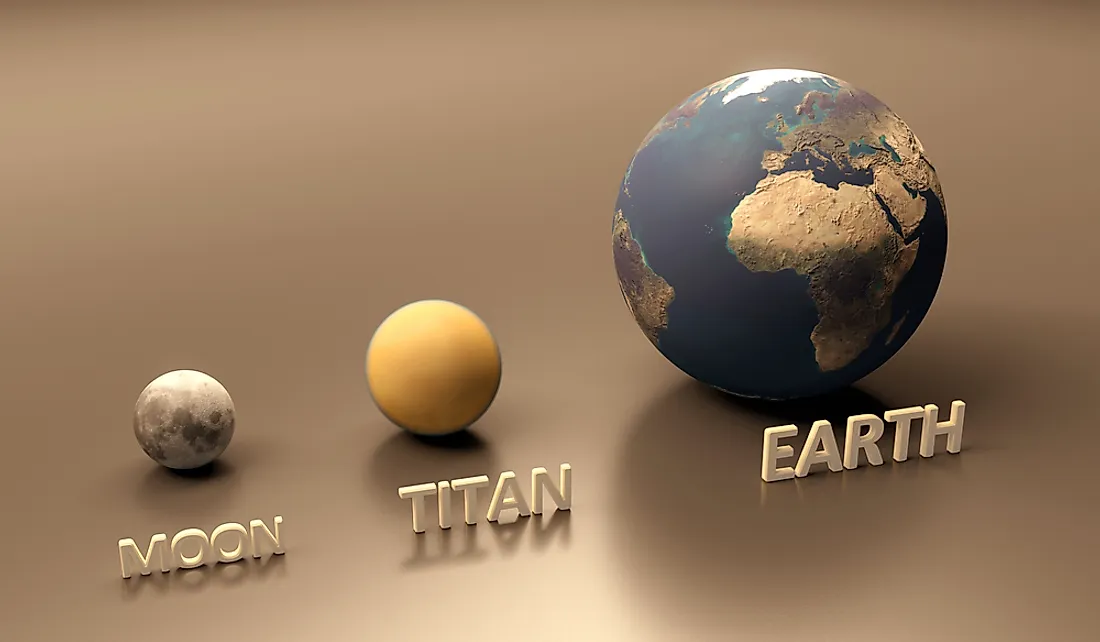Is Titan Bigger Than Earth?

Titan is the largest of Saturn's 62 moons and the second largest moon in the solar system after Jupiter’s Ganymede. The radius of Titan is about 1,600 miles making it smaller than half the size of Earth (3,963 miles) but larger than the Earth's moon (1,079.6 miles).
Size, Distance, and Orbit
Titan revolves around Saturn at an average distance of 759,000 miles while the planet revolves around the Sun at an average distance of 886 million miles. It takes 80 minutes for the light to travel from the Sun to Titan. Because of this, sunlight is 100 times fainter compared to the Earth. It takes 15 days and 22 hours for Titan to complete a revolution around Saturn while it takes 27 days and 8 hours for the Moon to complete a revolution around the Earth. Just like the Earth and its moon, Titan is locked in an orbital tidal with Saturn meaning and continually shows the same side to the planet as it orbits. Saturn takes about 29 years to complete a revolution around the Sun; its axis is also tilted resulting in seasons. Due to its size and slow rotation, a season in Saturn lasts for seven years. Titan has the same schedule as its host planet, it is tilted at the same angle, and its seasons are similar to Saturn’s.
Composition of Titan
It is an icy world with an obscured hazy atmosphere. It is the only moon with a dense atmosphere and the only other place where matter exists in a liquid state on the surface. The moon's atmosphere consists of nitrogen and methane just like Earth. Titan has lakes, oceans, and rivers filled with liquid methane and experiences a methane cycle similar to Earth's cycle.
The Surface of Titan
Titan's surface is one of the few places in the Solar System that resembles the Earth's surface except for the freezing temperature and different chemistry. Titan's temperature is about -290 degrees Fahrenheit. The core is thought to be made up of frozen water rather than rocks and thus volcanic activities thrust hot water into the surface instead of molten rocks. Rivers of flowing ethane and methane have curved the surface of Titan similar to Earth's rivers. Titan’s atmosphere extends ten times into space than that of the Earth because its gravitational force is much lower and unable to hold onto the gases firmly. The source of methane in Titan is as mysterious as the source of water on Earth, but the liquid state creates a suitable environment for complex chemistry to occur.











